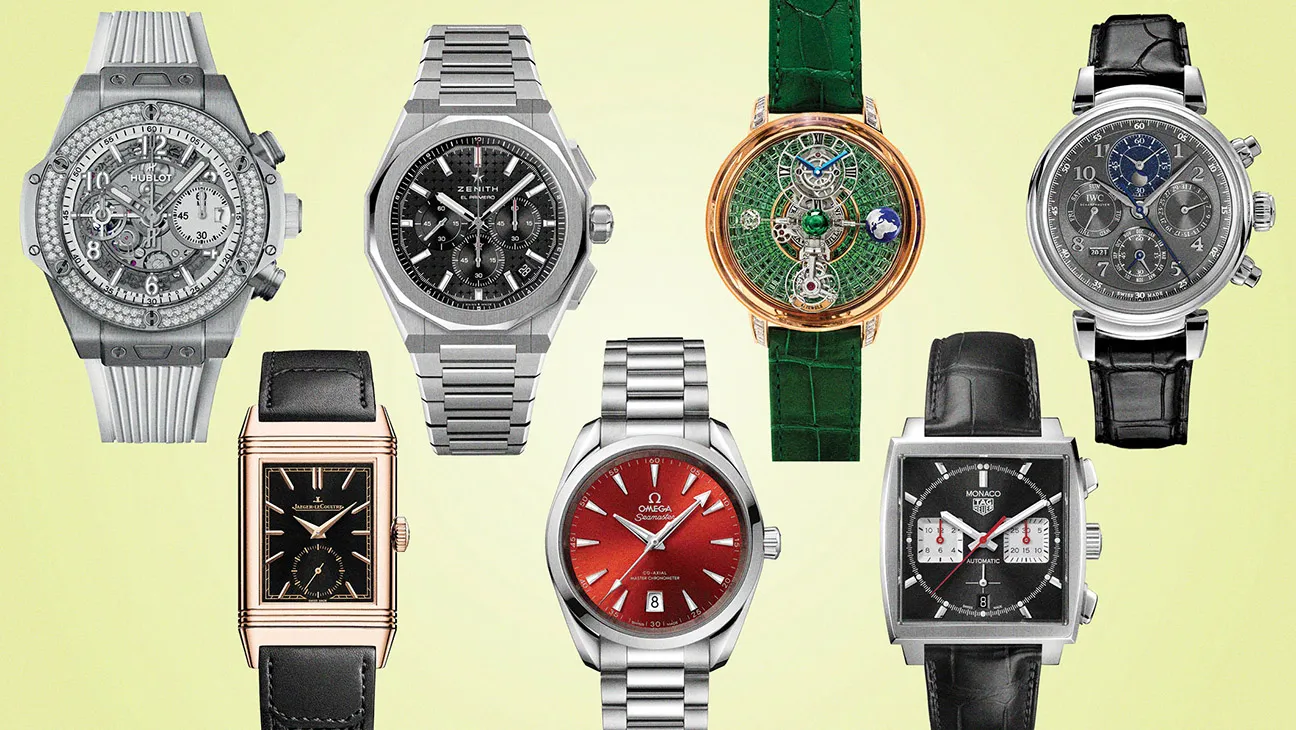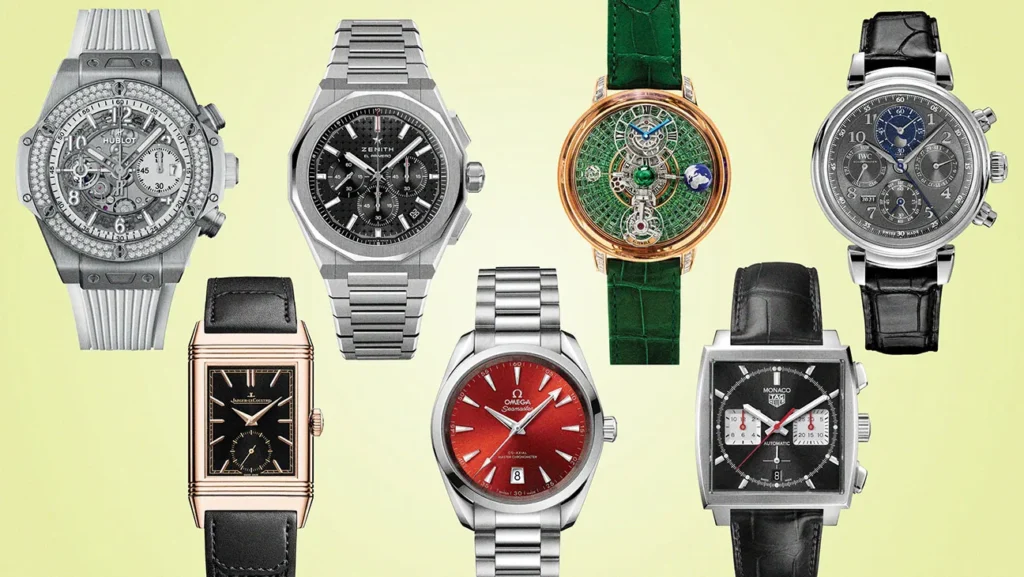When it comes to selecting the perfect watch, it’s not just about style or functionality; your wrist size plays a crucial role in determining the right fit. A watch that fits properly will not only feel comfortable but also look aesthetically pleasing, complementing your overall style. In this article, we will guide you through the process of choosing the ideal watch for your wrist size, considering factors like watch case diameter, strap material, and design.

Understanding Your Wrist Size
Before diving into the specifics of choosing a watch, you need to determine your wrist size. Measuring your wrist correctly is essential for getting a watch that sits comfortably and securely without being too tight or loose.
Step 1: Measure Your Wrist
Use a soft measuring tape or a piece of string to measure the circumference of your wrist. Wrap the tape around the narrowest part of your wrist, just above the wrist bone, to get an accurate measurement. Note down the number in inches or centimeters.
Step 2: Determine Your Wrist Size Category
- Small Wrist Size: 5.5″ to 6.5″ (14 cm to 16.5 cm)
- Medium Wrist Size: 6.5″ to 7.5″ (16.5 cm to 19 cm)
- Large Wrist Size: 7.5″ to 8.5″ (19 cm to 21.5 cm)
- Extra-Large Wrist Size: 8.5″ and above (21.5 cm and above)
Now that you have your wrist size, let’s look at how it influences the watch you should choose.
Choosing the Right Watch Case Diameter
The case diameter is one of the most important factors when selecting a watch. A larger case may look bulky on a smaller wrist, while a smaller case may get lost on a larger wrist. The ideal case size depends on both your wrist size and personal preference.
Small Wrist (5.5” to 6.5”)
For small wrists, a watch with a case diameter between 34 mm to 38 mm is ideal. Anything larger than this may overpower the wrist and look disproportionate. Opt for thinner, more refined designs that won’t overwhelm the wrist.
Medium Wrist (6.5” to 7.5”)
People with medium-sized wrists can pull off a variety of case sizes. A diameter of 38 mm to 42 mm works well. Watches within this range maintain a balanced look without being too large or too small. You can also experiment with bolder designs, but it’s important not to go too extreme.
Large Wrist (7.5” to 8.5”)
For large wrists, a case diameter between 42 mm to 46 mm is perfect. Watches with larger cases will not only fit well but also complement the natural width of the wrist. Larger cases, such as those seen in dive watches or chronographs, are often more comfortable and better suited for big wrists.
Extra-Large Wrist (8.5” and above)
Wrist sizes larger than 8.5” require a case diameter of 46 mm or more. Watches with oversized cases or designs that are too thin may appear unbalanced on a large wrist. Look for bold, substantial designs that will fill the space and keep the proportions in check.
Strap Width and Material
The width of the watch strap should also align with the size of your wrist. A strap that is too wide will appear clunky, while a strap that is too narrow may look fragile. Typically, the strap width should be roughly half the diameter of the case.
Small Wrist
For small wrists, a narrow strap works best. Look for watch straps that are 18 mm to 20 mm in width. This ensures a sleek and refined look without adding unnecessary bulk. Leather or metal straps with fine detailing tend to complement small wrist sizes well.
Medium Wrist
Medium wrists can support slightly wider straps, around 20 mm to 22 mm. This range strikes a balance between comfort and style, offering flexibility for various materials, such as leather, silicone, and metal. It’s important to consider both the watch style and strap material.
Large Wrist
For larger wrists, a broader strap, ranging from 22 mm to 24 mm, will provide the necessary support and balance. Materials like stainless steel, thick leather, or even rubber are great options to create a sturdy and confident look.
Extra-Large Wrist
Wrist sizes above 8.5” require strap widths of 24 mm and above. The larger strap will enhance the boldness of the watch and ensure a secure fit. Look for heavy-duty materials such as metal mesh, thick leather, or silicone for maximum comfort and durability.
Choosing Between Watch Designs
Different watch styles can enhance or detract from your overall look, so it’s essential to consider the design when selecting a watch.
Minimalist Watches
Minimalist watches with simple dials and thin profiles are ideal for those who prefer a clean and understated aesthetic. These watches generally work well on medium to small wrists, where the design won’t overwhelm the wearer. They are versatile and suitable for both casual and formal settings.
Sports Watches
Sports or dive watches are typically bulkier and larger. These watches often feature larger cases, thick bezels, and multiple complications like chronographs and subdials. They’re a great fit for those with large or extra-large wrists and can be worn during active pursuits or casual settings.
Dress Watches
Dress watches are characterized by their refined and elegant design, often featuring slim cases and leather straps. These watches are best suited for small to medium wrists, as the thin profile and sleek design complement more delicate wrist sizes.

Comfort and Functionality
The comfort of a watch is just as important as its aesthetic appeal. When selecting a watch, make sure to choose a model that feels comfortable on your wrist throughout the day.
- Fit: The watch should sit snugly but not be tight. It should be able to move slightly but not slide up and down the wrist.
- Weight: Choose a lightweight watch if you have a smaller wrist to avoid the feeling of heaviness.
- Adjustable Strap: A strap that allows for easy adjustment will provide the best fit, especially if you have fluctuating wrist sizes.
Conclusion
Choosing the perfect watch for your wrist size is essential to achieving both comfort and style. By considering your wrist size, case diameter, strap width, and design preferences, you can find a watch that complements your unique features and adds to your personal style. Whether you’re looking for a minimalist design or a bold sports watch, there’s a perfect timepiece out there for you. Remember, the right watch should feel like a natural extension of your wrist, enhancing your look while providing functionality and comfort.
FAQs
- How do I measure my wrist size? Use a soft measuring tape or a piece of string to measure the circumference of your wrist just above the bone. Measure in inches or centimeters for accuracy.
- What is the best watch size for a small wrist? For small wrists (5.5” to 6.5”), a watch case diameter between 34 mm to 38 mm is ideal.
- Can I wear a large watch on a small wrist? While it’s possible, it may look disproportionate. It’s better to stick with smaller case sizes for a more balanced appearance.
- What type of strap is best for small wrists? Narrow straps between 18 mm to 20 mm in width, made from materials like leather or fine metal, are ideal for small wrists.
- Should I choose a leather or metal strap for my wrist size? Leather straps are great for small to medium wrists, while metal straps work well for larger wrists, offering support and a bold appearance.
- Can I wear a sports watch if I have a small wrist? Sports watches are generally bulkier, so they may not suit small wrists. However, you can opt for smaller sport-inspired designs if you prefer this style.
- What is the best strap material for large wrists? Leather, metal, and rubber straps work well for large wrists, offering durability and comfort.
- How tight should my watch fit? The watch should fit snugly without cutting off circulation. It should move slightly on the wrist but not slide around too much.
- Can I wear an oversized watch on a medium wrist? Yes, but be mindful of the case diameter. A case size between 38 mm to 42 mm is typically the best fit for medium wrists.
- Do watch designs affect wrist size compatibility? Yes, certain watch designs, like dress or minimalist watches, suit smaller wrists better due to their thin profiles, while larger, bulkier designs complement bigger wrists.
4o mini

